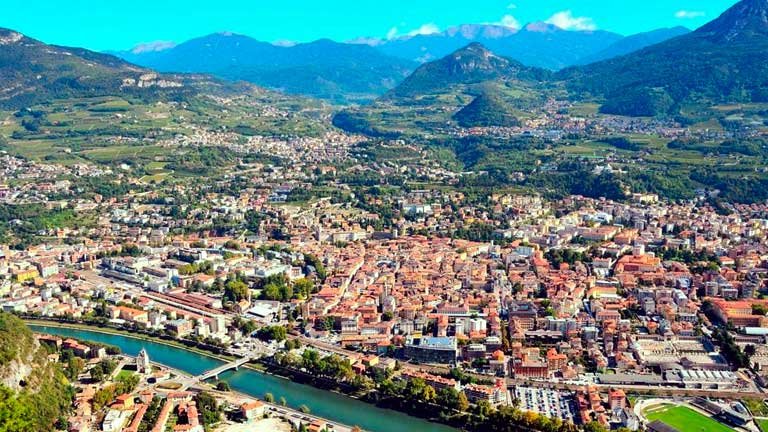


TRENTO
Trento is the historic capital of the Autonomous Province of Trento, it has 118,229 inhabitants and a very ancient history. Already a main crossroads in Ancient Roman times, it expanded during the Middle Ages until the 19th century and was the capital of the Episcopal Principality of Trento, a state entity part of the Holy Roman Empire.
Among the main monuments are the Castello del Buonconsiglio, the Cathedral of San Vigilio, the churches of Santa Maria Maggiore and Sant'Apollinare. Trento is now home to the Muse, the Science Museum. In the Middle Ages the city had a mint because of the rich silver mining in the surrounding mountains.
It has an important historical heritage, which includes the Antica Cava di Pila, today a key feature of the Argentario Eco-museum, located in Pila and famous for the extraction of Red marble. In the area, there is still an active Red marble quarry - in Villamontagna, the part of the city that overlooks the Piné plateau and the Valsugana.
In Trento, there is the Predara, a historic Red marble quarry which was once in the San Martino district and the Cava Storica delle Coste (in Coste). Going back up towards the Argentario Plateau, there is also the Canopa delle Sette Colonne, a mining area dating back to the Middle Ages and today of purely historical interest with the Canopa della Busa del Pomar.
Along the natural passage that leads to Valsugana, the Ponte Alto Orrido is an important tourist attraction recently brought back to full activity after a careful restoration of the roads. It is a spectacular gorge naturally carved by the Fersina stream, with an imposing waterfall.
Returning south to Trento there is Monte Calmuz, in the Cognola area, with a prehistoric archaeological site featuring a wide Red Verona Marble archway, known as Riparo Gaban.
back